Welcome to the PerGeos Use Case Gallery
Below you will find a collection of use cases using PerGeos Software. Based on the technology of its predecessor Avizo Software, PerGeos is a robust software platform for visualizing, processing, and analyzing 2D and 3D digital rock image data.
These use cases include scientific publications, articles, papers, posters, presentations or even videos that show how PerGeos is used to address various scientific and industrial research topics.
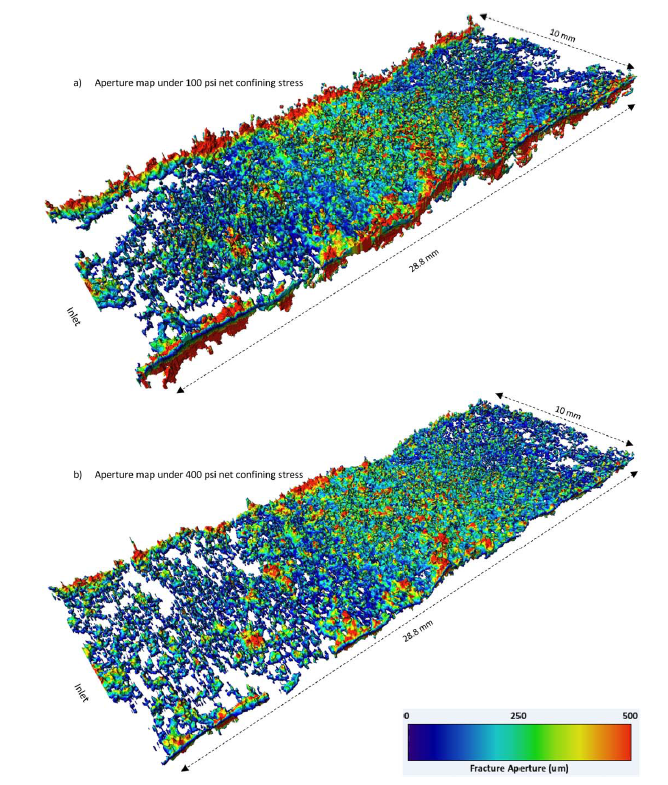
Pore‐Scale Experimental Investigation of Two‐Phase Flow Through Fractured Porous Media
Understanding transport mechanisms that govern two-phase flow in fractured porous media has direct implications for natural and industrial processes such as extraction of hydrocarbons from fractured reservoirs, geologic sequestration of CO2, or fluid flow through aquifers.
We present the results of a systematic pore‐scale experimental investigation of two‐phase oil/brine flow through a miniature water‐wet, fractured sandstone core sample. X‐ray microtomography is employed to ge... Read more
M. Arshadi, M. Khishvand, A. Aghaei, M. Piri, G. A. Al‐Muntasheri
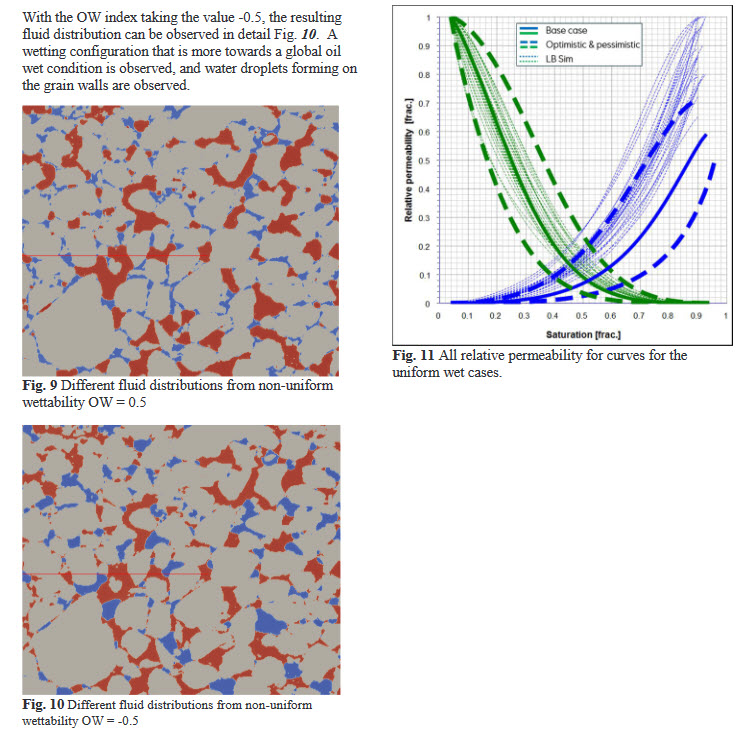
Relative permeability and capillary pressure are key properties within special core analysis and provide crucial information for full field simulation models. These properties are traditionally obtained by multi-phase flow experiments, however pore scale modelling has during the last decade shown to add significant information as well as being less time-consuming to obtain. Pore scale modelling has been performed by using the lattice-Boltzmann method directly on the digital rock models obtain... Read more
ThomasRamstad, Anders Kristoffersen, and EinarEbeltoft
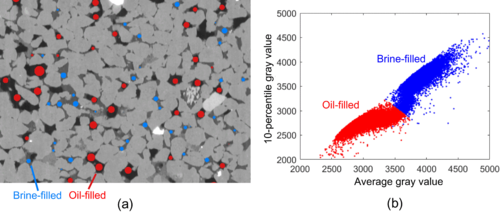
Validation of model predictions of pore-scale fluid distributions during two-phase flow
Pore-scale two-phase flow modeling is an important technology to study a rock’s relative permeability behavior. To investigate if these models are predictive, the calculated pore-scale fluid distributions which determine the relative permeability need to be validated. In this work, we introduce a methodology to quantitatively compare models to experimental fluid distributions in flow experiments visualized with microcomputed tomography.
First, we analyzed five repeated drainage-i... Read more
Tom Bultreys, Qingyang Lin, Ying Gao, Ali Q. Raeini, Ahmed AlRatrout, Branko Bijeljic, and Martin J. Blunt
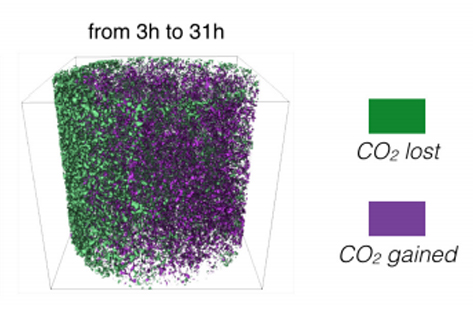
Pore-scale evolution of trapped CO2 at early stages following imbibition using micro-CT imaging
Despite its major influence on storage capacity, CO2 plume migration rate, and rates of CO2 dissolution and mineralization, there are outstanding questions regarding the mechanisms, times scales, influence of geological heterogeneity, and degree of residual trapping. The aim of the present study is to track temporal evolution of residually-trapped scCO2 ganglia during the early stages following imbibition, extract critical parameters such as fluid phase connectivity and scCO2 cluster size an... Read more
Department of Energy Resources Engineering, Stanford University | Lawrence Berkeley National Laboratory, Earth and Environmental Sciences
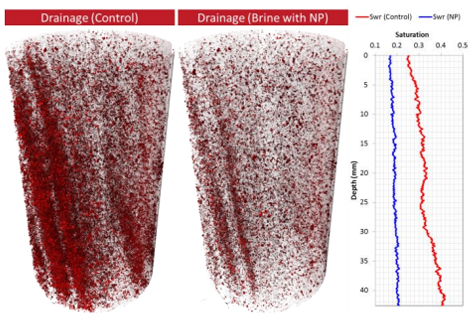
Pore-Scale observations of the effect of surface treated nanoparticles on drainage processes
In this study we observe, using pore scale X-ray micro-CT imaging and advanced petrophysical analysis, how surface treated silica nanoparticles improve sweep efficiency of n-octane in drainage corefloods. Specifically, upon injection of n-octane into a brine saturated core, preferential flow paths are observed and attributed to both viscous instability and rock heterogeneity; when the displaced phase contains a modest volume of nanoparticles, the same preferential flow paths are suppressed re... Read more
Department of Petroleum Engineering, The University of Texas at Austin | Departments of Chemical and Petroleum Engineering, University of Calgary | Materials & Structural Analysis, Thermo Fisher Scientific